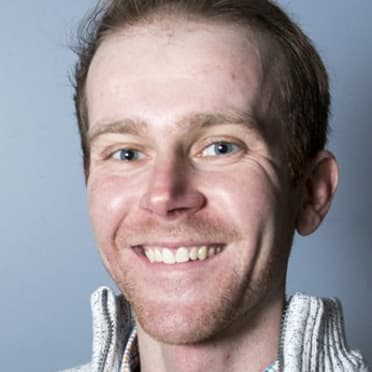PEORIA, Ariz. -- Shed Long Jr. acknowledges that there has been so much for him to absorb this spring.
Last year’s darling in Mariners camp, Long is in line to become Seattle’s everyday second baseman and the regular leadoff man, as he enters his first full season in the Majors. He got a head start on those roles in September, but accumulating 500 (or more) plate appearances and allocating a bulk of the innings over veteran Dee Gordon for six months will be a far more demanding gauntlet.
“It was kind of like a dream come true, but at the same time, it was kind of like a moment of realization where I have to grind harder now,” Long said. “It only gets harder from here. It was hard to get there, but they always say it's harder to stay. The grind, it goes up a level now.”
Here are the specific areas Long is trying to improve upon in Spring Training.
Hitting secondary pitches
The good: On fastballs, Long had a .321 average and .531 slugging percentage. He whiffed against them 21.1 percent of the time, according to Statcast. Those kinds of numbers suggest that 20 homers might not be out of the realm of possibility. But Long’s path to propelling his power -- and overall offensive game -- will hinge on recognizing and attacking non-fastball pitches.
Long hit .201 against breaking balls (sliders, knuckle and curveballs) and .150 against offspeed, for a .194 average for anything that wasn’t a fastball. If Statcast knows this is a weakness, so will Major League pitchers, and replicating those numbers at the top of the lineup could create long-term problems.
Improving defense
Long also acknowledges that his defense, at times, could be a liability. While most advanced metrics are more liberal with smaller sample sizes, Long rated poorly over 210 innings at second base last season (minus-1 Outs Above Average, minus-5 Defensive Runs Saved, minus-0.7 Ultimate Zone Rating). Those numbers were all among the lower echelon at the position.
The upside is that Long is exclusively practicing second base this spring under the watchful eye of heralded infield coach Perry Hill. Long was brought up as a catcher in the Reds organization and played nearly half of his games with Seattle last season in left field. So he is hoping that a more concentrated channel of his focus, and at a less demanding position, will create more stability in the field.
“We'd like now just to see if he can play second base on a regular basis,” Mariners general manager Jerry Dipoto said before camp. “We didn't really get that last year because of down time with [a fractured right finger that sidelined him seven weeks], we feel like he's Major League-ready with the bat and on the offensive side, he's a good athlete so he's going to get a lot of the reps at second base.”
Finding consistency
Long slashed .289/.337/.518 with four homers over his final 23 games last season. That was within the competitive caveat of September baseball, where expanded rosters and an influx of lesser talent finds its way to the field as clubs try to gauge what they’ll have for the next season.
But the projections suggest that it was perhaps an early indication of what 2020 could offer. FanGraphs’ Steamer projections say that Long will be worth 1.4 Wins Above Replacement, which would represent a significant step forward.
“If you watched, especially the last 30 days of last season, it is a legitimate bat. Shed swings,” Dipoto said. “He's got a very good idea what he's doing at the plate. He's aggressive. He's got some power. He gets on base. There are a lot of real positives about as offensive game and we've always thought that he had an everyday bat.”
Leaning on his elders
Gordon would be the odd man out in this transition, moving into a backup middle-infield role in the final year of his contract, but he remains a guiding voice in Long’s ear. Long and Gordon worked out together for the second straight offseason, along with J.P. Crawford, Dylan Moore, and a few other big leaguers, such as Francisco Lindor.
“We’re grown men now. He’s got to play,” Gordon said recently of the change. “He’s my guy.”
Third baseman Kyle Seager, who won a Gold Glove Award in 2014, has also been widely praised for his leadership within the Mariners infield. So even within a lineup that could be the American League’s youngest, the 24-year-old Long believes there’s enough experience in the room to help him tap into his next level.
